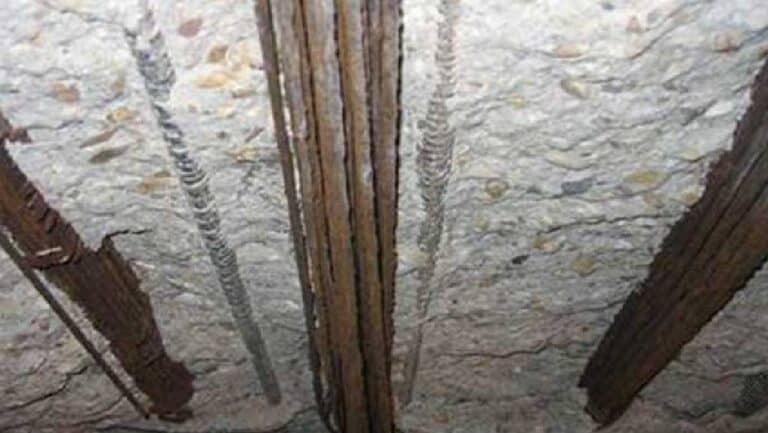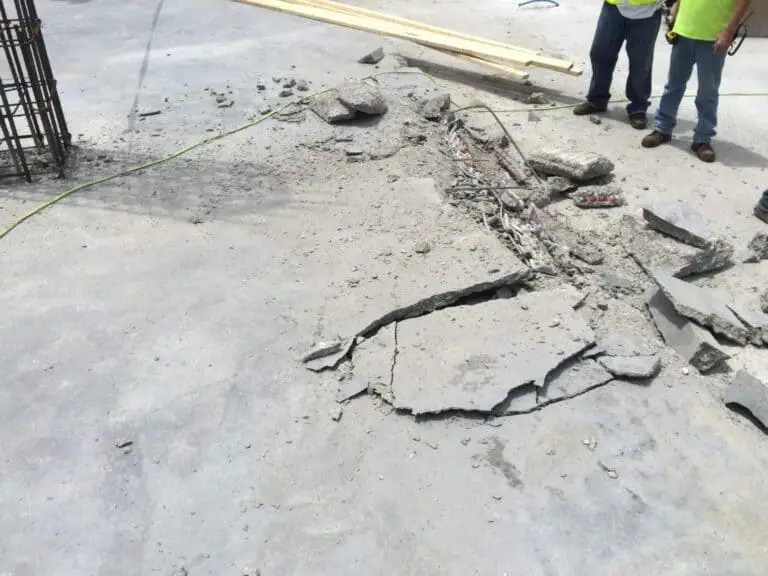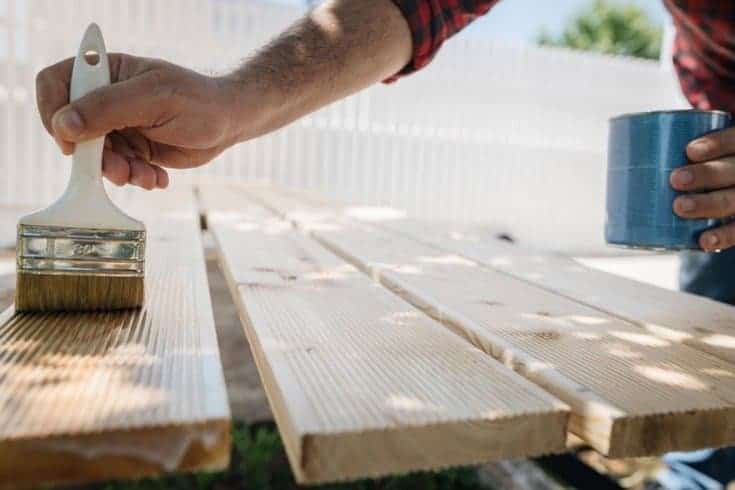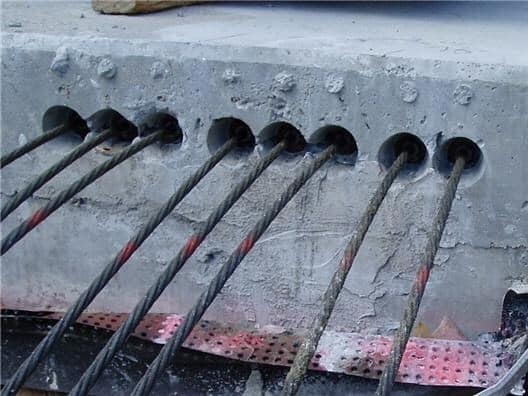Can Post Tension Cables Be Repaired and Tightened?
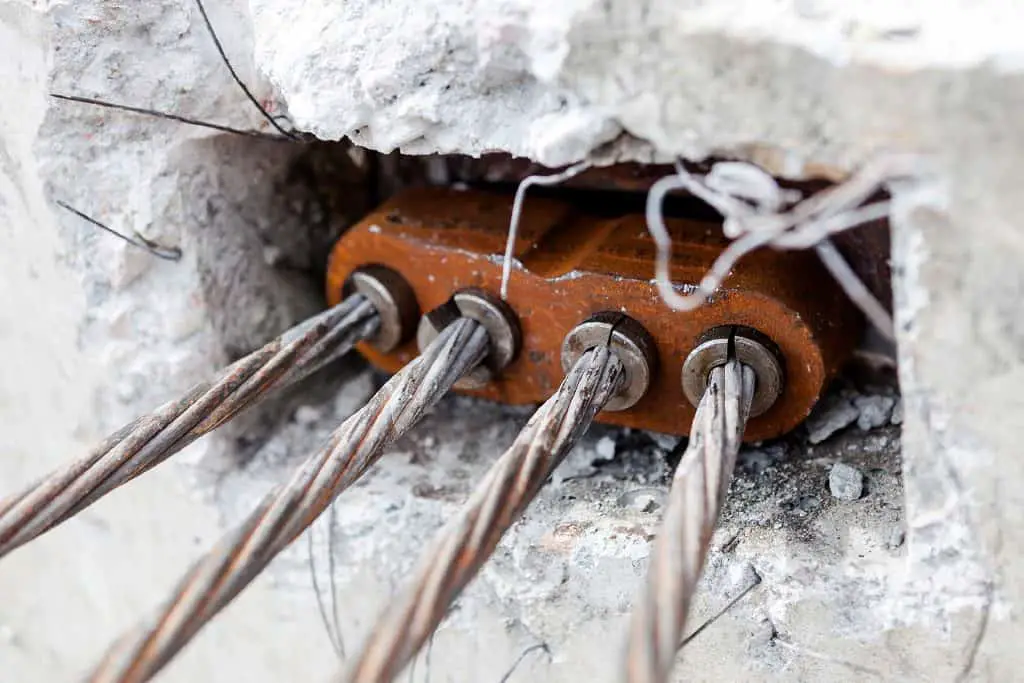
Post-tension cables are a vital component in modern construction, providing strength and stability to structures such as bridges, parking garages, and high-rise buildings. However, like any other structural element, post-tension cables can experience wear and tear over time, and occasionally they may require repairs or tightening.
In this article, we will explore the possibility of repairing and tightening post-tension cables, examining the techniques and considerations involved.
Post-Tension Cables Basic
Post-tension cables are an integral part of modern construction, providing structural reinforcement and strength to buildings, bridges, and other infrastructure projects. These high-strength steel cables are tensioned after the concrete has been cast, helping to counteract the forces exerted on the structure. This technique, known as post-tensioning, allows for longer spans, reduced structural thickness, and improved load-bearing capacity.
The applications of post-tension cables are diverse, ranging from residential and commercial buildings to bridges, parking structures, and even sports stadiums. Their usage has become increasingly popular due to their cost-effectiveness and ability to optimize structural design. However, regular maintenance and inspection are crucial to ensure the long-term performance and safety of these cables./
Before delving into the repair and tightening of post-tension cables, it is important to grasp their fundamental purpose and construction. Post-tension cables consist of high-strength steel strands encased in a protective sheath, which are then tensioned and anchored within a structure. The cables are typically installed to counteract forces such as compression, tension, and shear, thereby enhancing the structural integrity of the building or bridge.
Signs of Post-Tension Cable Issues
Detecting potential problems with post-tension cables is crucial to ensure the safety and longevity of a structure. Some signs that may indicate issues with post-tension cables include:
- Visible damage: Look for any signs of visible damage, such as rust, corrosion, or frayed strands. These can indicate weakened or compromised cables.
- Cracking or sagging: Cracks in concrete or noticeable sagging of a structure can be a result of post-tension cable failure.
- Unusual noises: If you hear unusual creaking or popping sounds coming from a building or bridge, it could be a sign of stressed or damaged post-tension cables.
- Excessive vibrations: Vibrations that are beyond normal can suggest post-tension cable problems, especially if they are accompanied by other signs.
If any of these signs are observed, it is important to consult with a qualified structural engineer or professional to assess the condition of the post-tension cables.
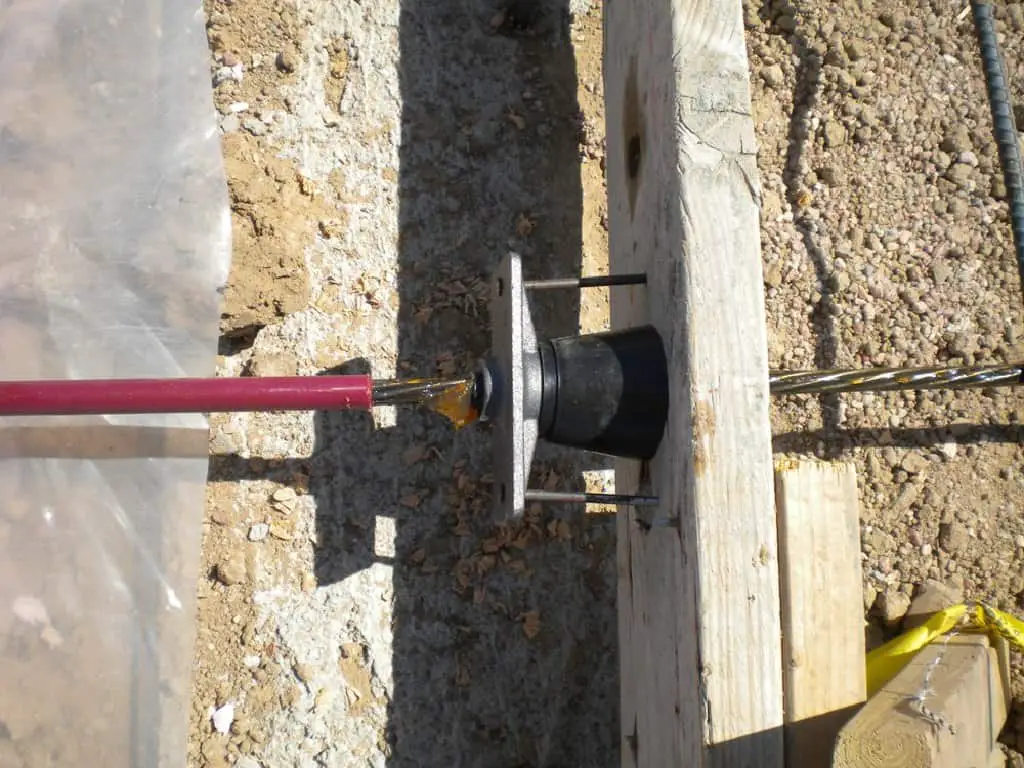
Causes of Post-Tension Cable Damage
Post-tension cables can experience damage due to various factors, including construction errors, environmental conditions, or aging. It’s important to identify signs of cable damage early on to prevent potential risks and further deterioration. Some common causes of post-tension cable damage include:
- Corrosion: Exposure to moisture, chemicals, or harsh environments can lead to corrosion of the steel cables.
- Overloading: Excessive loads beyond the cable’s capacity can cause permanent deformation or even failure.
- Construction errors: Improper installation or stressing of the cables can result in damage and reduced effectiveness.
- Material defects: Manufacturing defects or substandard materials can compromise the strength and integrity of the cables.
Identifying signs of post-tension cable damage is crucial for timely repairs. Some common indicators include visible cracks in the concrete, noticeable sagging or deflection of the structure, and signs of corrosion such as rust stains or spalling of concrete. Ignoring these signs can lead to serious consequences, including structural instability, safety hazards, and costly repairs.
Repair Methods for Post-Tension Cables
Repairing post-tension cables typically involves a combination of non-destructive evaluation techniques and targeted repair approaches. Non-destructive evaluation techniques allow for a thorough assessment of the cable’s condition without causing further damage. These techniques may include visual inspections, ultrasonic testing, magnetic particle inspection, or acoustic emission testing.
The choice of repair method depends on the type and severity of cable damage. Some common repair options for post-tension cables include:
- Localized repairs: This method involves repairing or replacing damaged cable sections, such as post tension cable corrosion or broken strands. It is a cost-effective solution for minor damage and ensures the structural integrity of the cable system.
- Externally bonded reinforcement: This technique involves applying additional external reinforcement, such as carbon fiber sheets or plates, to enhance the cable’s strength and load-carrying capacity.
- Grouting repairs: In cases where post-tension cables have experienced grout loss or voids, grouting repairs can be performed. This involves injecting a specialized grout material into the cable ducts to fill any gaps and restore the cable’s integrity.
- Anchor repairs: Anchors are crucial components of post-tension cable systems. If anchors are damaged or experiencing corrosion, they can be repaired or replaced to ensure the cables’ proper tensioning and overall structural stability.
- Cable encapsulation: In situations where the cables have been exposed to severe corrosion or are no longer repairable, encapsulation can be considered. This involves encasing the damaged cables in a protective material, such as a high-strength resin or epoxy, to prevent further deterioration and maintain structural stability.
When selecting the appropriate repair method, factors such as the extent of damage, available resources, and long-term performance should be taken into account. It is advisable to consult with experienced engineers and repair specialists to determine the most suitable approach for each specific case.
Read: Post Tension Cables Spacing
Tightening Post-Tension Cables
Proper cable tightening is essential for maintaining the structural stability and load-carrying capacity of post-tension cable systems. Over time, cables can experience relaxation or loss of tension, which can compromise their effectiveness. The cable tightening process typically involves the following steps:
- Initial assessment: A thorough inspection is conducted to assess the current tension level of the cables and identify any relaxation or loss of tension.
- Tensioning equipment setup: Specialized tensioning equipment, such as hydraulic jacks or mechanical pullers, is set up to apply the necessary force to the cables.
- Tensioning procedure: The cables are gradually tensioned to the specified design level using the appropriate tensioning equipment. This process involves applying force while carefully monitoring and adjusting the tension to achieve the desired level.
- Verification and testing: Once the tensioning process is complete, the cables are tested to ensure that they meet the required specifications and load-carrying capacity. This may involve conducting load tests or using non-destructive testing techniques to verify the cable’s performance.
It is crucial to follow industry standards, guidelines, and manufacturer recommendations when performing post-tension cable tightening. Qualified professionals with expertise in cable tensioning should carry out this process to ensure its accuracy and effectiveness.
Safety Considerations during Cable Repairs and Tightening
Safety is paramount during post-tension cable repairs and tightening operations. The following precautions should be taken to ensure a safe working environment:
- Training and expertise: Only qualified and trained professionals with relevant experience should handle post-tension cable repairs and tightening. They should have a thorough understanding of the procedures, equipment, and safety protocols involved.
- Personal protective equipment (PPE): All personnel involved in repair and tightening activities should wear appropriate PPE, including helmets, gloves, safety glasses, and high-visibility clothing. This protects them from potential hazards and ensures their safety.
- Secure work area: The work area should be properly secured to prevent unauthorized access and protect workers and the public from potential dangers. Signage, barriers, and safety cones can be used to clearly mark the work zone and alert others to the ongoing repairs.
- Equipment maintenance and inspection: Regular maintenance and inspection of tensioning equipment and tools are essential to ensure their proper functioning and minimize the risk of accidents. Faulty or damaged equipment should be immediately replaced or repaired.
- Adherence to regulations: Compliance with relevant industry standards, guidelines, and local regulations is crucial to ensure safety during post-tension cable repairs and tightening. This includes following proper installation techniques, load testing procedures, and safety protocols.
By prioritizing safety and adhering to established guidelines, the risk of accidents and injuries during post-tension cable repairs and tightening can be significantly reduced. It is essential to create a safety-conscious work environment where all workers are aware of potential hazards and actively engage in safe practices.
Professional Expertise and Qualifications
Post-tension cable repairs and tightening require specialized knowledge and expertise. It is crucial to hire experienced professionals with the necessary qualifications to ensure the quality and effectiveness of the repairs. Here are some important considerations:
- Experience: Look for professionals who have a proven track record in handling post-tension cable repairs. They should have experience working on similar projects and be familiar with different types of cable systems and repair methods.
- Certifications and qualifications: Check for certifications and qualifications relevant to post-tensioning and cable repairs. These may include certifications from recognized industry organizations or training programs that specialize in post-tensioning.
- Engineering expertise: Engage professionals with a background in civil or structural engineering. Their technical knowledge and understanding of structural behavior will contribute to accurate assessments and effective repairs.
- Industry reputation: Research the reputation and credibility of repair contractors or firms. Look for testimonials, reviews, or recommendations from previous clients to ensure you are working with a reputable service provider.
- Collaboration with manufacturers: Professionals who have established relationships with reputable manufacturers can provide valuable insights and access to high-quality materials and equipment. This collaboration ensures that repairs are conducted according to manufacturer specifications and industry best practices.
When selecting a contractor for post-tension cable repairs and tightening services, it is essential to conduct due diligence and evaluate multiple options. Request project references, discuss repair strategies, and obtain detailed cost estimates to make an informed decision.
Cost Considerations for Post-Tension Cable Repairs
The cost of post-tension cable repairs can vary depending on several factors. It is important to consider the following cost considerations:
- Extent of damage: The severity and extent of cable damage will impact the overall repair cost. Minor repairs, such as localized repairs, may be more cost-effective than extensive repairs that require significant replacement or encapsulation.
- Repair method: The chosen repair method will have cost implications. Some methods, such as externally bonded reinforcement, may require additional materials and labor, increasing the overall repair cost.
- Labor and expertise: The level of expertise and labor required for the repair project will affect the cost. Complex repairs or repairs in challenging locations may require more specialized skills and result in higher labor costs.
- Equipment and materials: The type and quality of equipment and materials used for repairs can influence the overall cost. High-quality materials and specialized equipment may have higher upfront costs but can lead to better long-term performance and durability.
- Indirect costs: Consider indirect costs such as project management, permits, scaffolding, and any temporary support structures required during the repair process.
While cost is an important factor, it is crucial to prioritize the quality and effectiveness of repairs. Investing in professional expertise and high-quality materials may result in long-term cost savings by reducing the need for future repairs or premature cable replacements.
Conclusion
Post-tension cables are crucial elements in modern construction, providing strength and stability to structures. While they can experience wear and tear over time, post-tension cables can be repaired and tightened to maintain their integrity and functionality.
Repairing post-tension cables involves careful inspection, preparation, and the selection of appropriate repair techniques. It is essential to work with professionals who have expertise in post-tensioning systems to ensure the safety and effectiveness of the repairs.
Tightening post-tension cables is necessary to restore their initial tension and counteract relaxation over time. This process requires accurate assessment, proper tensioning equipment, and adherence to recommended procedures.
Whether it is repairs or tightening, it is crucial to consult with qualified structural engineers or professionals with experience in post-tensioning systems. They can assess the condition of the cables, recommend the most suitable approach, and ensure that the work is carried out to the highest standards.
By addressing post-tension cable issues promptly and employing appropriate repair and tightening techniques, the structural integrity and safety of buildings and bridges can be preserved, ensuring their longevity for years to come.
FAQs
How do you know if post-tension cables need repair?
Signs of post-tension cable damage include visible cracks, corrosion, sagging or deflection of the structure, and spalling concrete. If any of these signs are present, it is advisable to consult with professionals for a thorough assessment.
Can post-tension cable repairs be DIY, or should professionals be hired?
Post-tension cable repairs require specialized knowledge, expertise, and equipment. It is highly recommended to hire experienced professionals who have the necessary qualifications to ensure the safety and effectiveness of the repairs.
How much does it cost to repair post-tension cables?
The cost of repairs depends on factors such as the extent of damage, repair method, labor, and materials. It is best to obtain a detailed cost estimate from reputable contractors after an assessment of the specific project.
What are the risks of not repairing damaged post -tension cables?
Not repairing damaged post-tension cables can lead to several risks and potential consequences:
Structural instability: Damaged cables compromise the structural integrity of buildings and infrastructure. Over time, this can lead to increased deflection, excessive vibrations, and even structural failure, posing significant risks to occupants and property.
Safety hazards: Failed or weakened post-tension cables can pose safety hazards, especially in high-rise buildings, bridges, and other critical structures. The risk of cable failure increases, potentially resulting in catastrophic incidents, property damage, or injuries.
Costly repairs: Delaying or neglecting necessary repairs can escalate the extent of damage over time. This may require more extensive repairs or even complete cable replacements, leading to significantly higher costs and disruptions to the functioning of the structure.
Reduced lifespan: Post-tension cables that are not repaired promptly may experience further deterioration and decreased lifespan. Timely repairs can help preserve the longevity of the cables and extend the overall lifespan of the structure.
Are there any alternatives to repairing post-tension cables?
In some cases, if the damage is minimal and poses no immediate risk, monitoring and regular inspections may be considered as a preventive measure. However, it is essential to consult with professionals to assess the severity of the damage and determine the most appropriate course of action.
Can post-tension cables be replaced instead of repaired?
Depending on the extent of damage and the condition of the cables, it may be necessary to replace the cables entirely. This decision is typically made after a thorough evaluation by professionals who consider factors such as the remaining lifespan of the cables and the overall structural requirements.
How long does it take to repair and tighten post-tension cables?
The duration of post-tension cable repairs can vary depending on the complexity of the project, the extent of damage, and the repair methods employed. Minor repairs or localized repairs may take a few days, while more extensive repairs could require weeks or months to complete.

